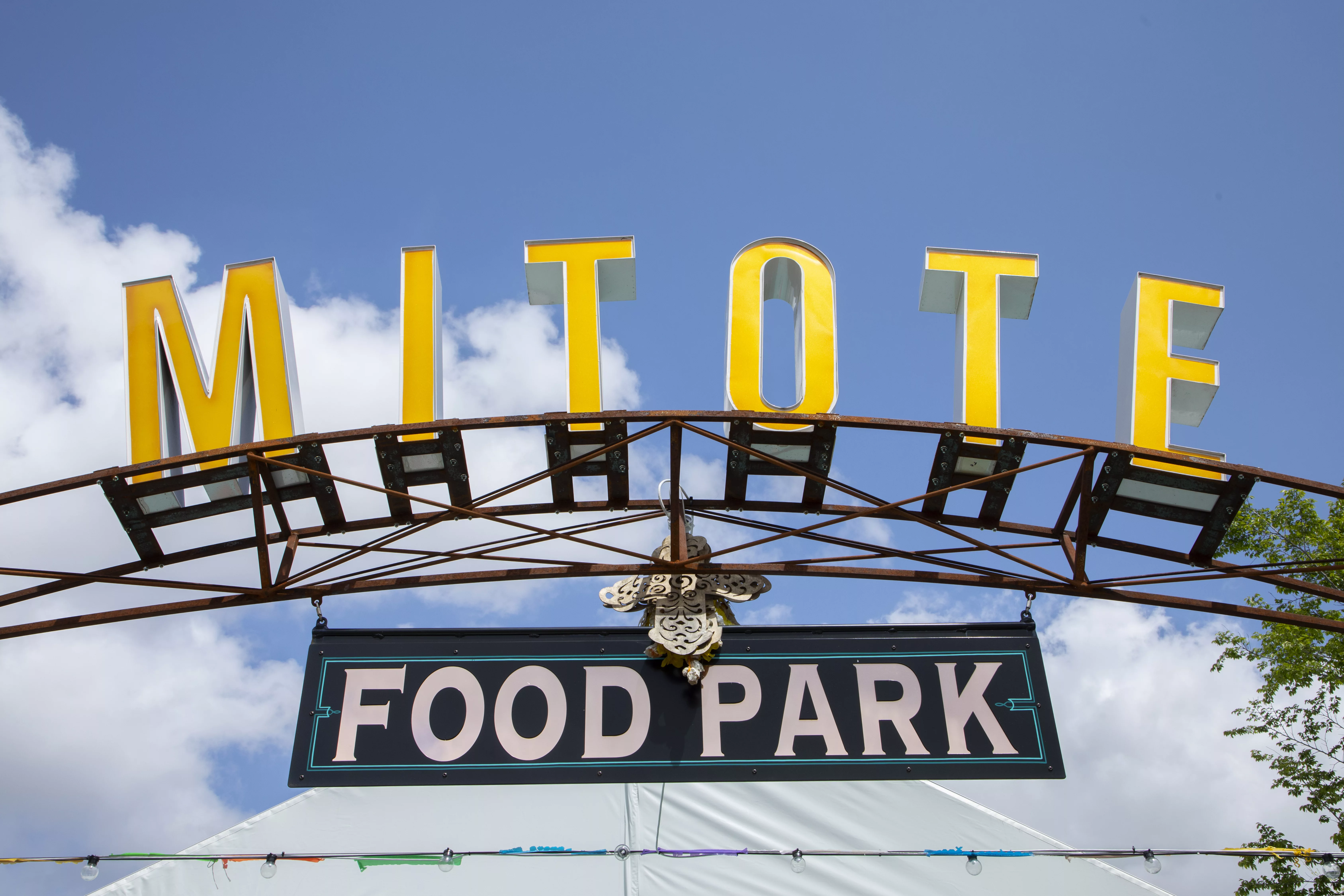
Food trucks are an American phenomena. They trace their roots back to 1866 when Charles Goodnight (gotta’ love the name) invented the chuckwagon to feed famished cowboys driving cattle from Texas to markets in New Mexico. The hearty fare included heaping helpings of baked beans and bacon, salted pork and beef, sourdough biscuits and strong black coffee. In WW I, the U.S. Army rolled out mobile canteens, or field kitchens, to feed troops fighting on the front lines. In 1936, Oscar Mayer introduced the Wienermobile, the first portable hot dog stand. And when Americans migrated to the suburbs in the ‘50s, the Good Humor Man followed. On hot summer days he’d drive thorough neighborhoods playing melodies that beckoned children to gather for a popsicle or chocolate-covered ice cream bar on a stick. In 2008, Roy Choi opened Kogi in Los Angeles to serve Korean barbeque. It was one of the first food trucks in the U.S. to offer gourmet fare. Over the past decade, the food truck business has taken off. It’s now a $1.5 billion industry employing 40,547 people. According to Zippia Research, there were 8,677 food trucks in the U.S. in 2011 compared to 36,324 today. That’s impressive considering a used food truck sells for $70,000 to $100,000 and a fully outfitted new one can cost $250,000.
So if a single food truck can draw a crowd why not several in one location? That’s the thinking behind Santa Rosa’s Mitote Food Park, the only venue of its kind in Sonoma County. Brightly colored trucks line the perimeter of a large tent that seats up to 300 people. They offer cuisine from Oaxaca, Jalisco, Chiapas, Michoacán, the Yucatan and other regions of Mexico. In July, the food park celebrates its first anniversary. Mitote has proved to be a magnet, drawing customers from throughout the Bay Area and beyond.
The beginning…
Mitote Food Park is the initial phase of Tierra de Rosas, a $40 million project of mixed-income housing, retail shops and a public plaza. Once completed the complex will revitalize Roseland, a mainly Hispanic area of Santa Rosa. The Sonoma County Community Development Commission (CDC) purchased the 7.4-acre property in 2011. They retained MidPen Housing, a large Bay Area-based developer, owner and manager of high-quality housing in Northern California, to develop the site. For implementation of the food park concept, MidPen and CDC turned to Octavio Diaz. With over 30 years of experience in the restaurant business and an active supporter of the community, he proved to be the perfect choice. “Mitote comes from an ancient Mayan word that means a celebratory dance or gathering,” Diaz says. “Mitote Food Park is a community gathering place. It’s all about celebrating Latino heritage and culture thorough food, music and the arts.”
“Mitote is a treasure,” says CDC Executive Director Michelle Whitman. “It’s a success, a wonderful vibrant addition to the community. So unique. Older couples dance alongside parents with toddlers. It’s such good fun I asked my family to take me there for Mother’s Day.”
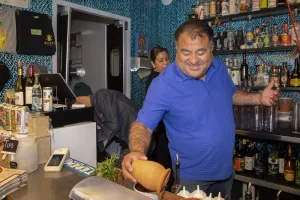
Diaz was born in Santa Gertrudis near the city of Oaxaca. He and his six siblings grew up farming, and helping out in the kitchen. At age 13 he came to live with his uncle in Rohnert Park. “The idea was for me to learn U.S. farming practices then return home,” he says. That didn’t happen. Diaz graduated from Rancho Cotate High School and received a scholarship to attend Santa Rosa Junior College. While in school, he worked at a local restaurant as a dishwasher. “I wasn’t too concerned about the long hours or the pay. I just wanted to learn everything I could about the business.” His hard work paid off. He took a job with the Doubletree by Hilton Sonoma Wine Country Hotel eventually becoming banquet captain. That followed with a stint at the Sheraton Petaluma as food and beverage manager. Diaz enjoyed living in Sonoma County. The plazas in Healdsburg and Sonoma reminded him of the zocalo’s in Oaxaca and Santa Gertrudis, welcoming places where families gathered. And then he met his future wife. So instead of Octavio returning home, most of the Diaz family joined him. The family now owns and operates several food establishments—brother Pedro owns El Farolito and El Gallo Negro, a restaurant, bar and mezcaleria in Windsor; Francisco, the youngest, manages Casa del Mole, a market and taqueria in Healdsburg. The brother’s mother, Juana Ramirez, makes an authentic Mole Negro de Oaxaca with 20-plus ingredients sourced from the family’s former neighbor’s farms in Santa Gertrudis. Her mole is available for purchase at Casa del Mole. Octavio, the oldest brother, owns the Agave Restaurants and Tequila Bars in Healdsburg and Oakland. And several months ago he bought a food truck that’s located at Mitote.
The trucks…
There are eight Mitote food trucks selling a diverse range of foods. They rotate days with five always on site. Here’s a partial lineup.
Yuca Mami
“My father grew up in the Yucatan where he lived in a house made of sticks. He came to this country when he was 16. Now he owns two car washes,” says Jason Echeverría, 27-year-old owner of Yuca Mami. “I admire him. He’s my hero.” The food truck is very much a family business. Echeverría’s grandmother Rosalinda is the ‘mami’ of Yuca Mami. “She learned to cook from the time she was 7 years old. She’s made and sold food all her life,” Echeverría says. Rosalinda and her husband Ernesto immigrated to the U.S. over 25 years ago. In Redwood City, she made traditional Oaxacan panuchos, a refried tortilla stuffed with refried black beans, topped with chopped cabbage, pulled chicken, tomato, pickled red onion, avocado and pickled jalapeño pepper. Her business thrived until during the pandemic she was evicted from her apartment for making and selling food. “It was important that my grandmother keep doing what she’s done all her life,” Echeverría says. So the family bought a trailer and outfitted it with a kitchen. “The process took about a year and a half, but it was worth it. Yuca Mami has many loyal customers, and my grandparents are happy. Seems everything happens for a reason.” Echeverría’s uncle Gus operates an events business in the East Bay. He drives over to help out at Yuca Mami two days a week. Ester, the food truck’s only full-time employee, learned her cooking skills from Rosalinda. “My grandma loves her,” Echeverría says. “Ester’s like family.” Yuca Mami serves empanadas, cochinita pibil, Yucatan-style tamales and a few other dishes. “We keep the menu small to focus on quality,” says Echeverría. “One of the great things about the food park is the diversity of foods. The trucks don’t compete. We’re all here for the customers.” In addition to Yuca Mami, Echeverría owns Los Gallos Taqueria in Rohnert Park and Los 2 Gallos in Santa Rosa.
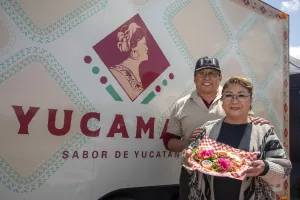
The ancient Mayas and the Spaniards influenced the food of the Yucatan. The cuisine includes turkey, chicken, pork and seafood, flavored with the distinctive achiote, a sweet, somewhat peppery sauce made from the seed of the annatto plant. Achiote is used in cochinita pibil, slow-cooked pork wrapped in a banana leave. It’s also used as a marinade for tacos al pastor. The word “taco” comes from the Nahuatl/Aztec word thalco. “Al pastor” was introduced by Lebanese immigrants in the 1930s. It’s a derivative of shawarma, lamb cooked on a vertical spit and served on pita bread. By cooking vertically, the marinade drips down and the meat crisps. For the Mexican tacos al pastor, pork replaced lamb and is served on a tortilla along with cilantro and onion.
Lucha Sabina
Damian Zuniga’s food truck, Lucha Sabina, was the first to open at Mitote. “In the beginning things were slow,” he says. “Then people found us.” His truck specializes in Oaxacan street food made with mushrooms—tacos, sopes, tlayudas, burritos, molotes and quesadillas. Mushrooms thrive in Oaxaca. With an emphasis on mushrooms, it’s only appropriate that his truck should be named after María Sabina Magdalena García, a revered figure in Oaxaca who used mushrooms for healing. Born at the end of the 19th century in the mountain village of Huautla de Jiménez, she became known as a shaman, or sabia, “one who knows.” Mushrooms from the Oaxaca area also include those used for psychedelic purposes, though psychedelics won’t be found at Mitote. The food truck’s mushrooms come from Sebastopol’s Gourmet Mushrooms, Inc. the largest cultivator of culinary mushrooms in the U.S. Lucha means struggle. So how does that fit with Lucha Sabina? “It represents the spirit of the immigrants who come to this country and lucha por la vida,” Zúñiga says. “They struggle and work hard to put food on their families’ tables.”
Lucha Sabrina serves tlayuda, a popular, Oaxacan dish that resembles a pizza. A large thin crispy tortilla is spread with refried beans, quesillo or Oaxacan cheese, salsa, lettuce or cabbage, avocado and meat, usually shredded chicken, beef or pork. And, of course, there’s mushrooms.
Legend has it that quesillo came about in the late 19th century as a result of a young girl’s mistake. Leobrada Castellanos Garcia lived in Reyes Etla, Oaxaca. Once, while curdling cheese, she got distracted and her mixture went too far, and lost moisture. Concerned her parents would discover her mistake, she added hot water. The result was a sticky paste with the consistency of an Italian mozzarella. Her quesillo went on to become one of Mexico’s most famous cheeses.
Gio y Los Magos
Orange in color, it’s hard to miss Gio y Los Magos. The logo on the truck’s side panel pictures a bearded wizard or magician in a pointed hat and blue cloak, his hands raised over a torta. “People say we make good food so fast we must be magos, or magicians,” says owner Jose Cazares Pérez. The Gio in the truck’s name is Cazares Pérez son. The family operated business specializes in birria. The stew, traditionally made with goat meat, originated in the state of Jalisco. In the 1950s a woman in Tijuana changed all that. Goat meat was expensive so she switched to beef, added more water to the stew and created the popular Tijuana-style birria. From that came the birria beef taco, a tortilla filled with shredded beef and dunked in red consommé or birria braising sauce. And there’s quesabirrias, made with quesillo. Chefs tend to add their own personal touch to birria, though the common characteristic is the red consommé, the color derived from dried red chilies.
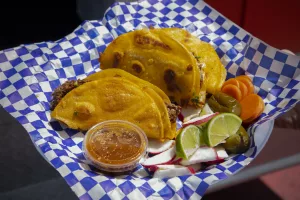
Dan and Mina Hayes of Bennett Valley and their 2-year-old son recently dined at Mitote. “It’s the perfect weather for eating outside so we came here,” Dan says. “We actually were here a year ago when the park first opened. Pretty quiet back then. Not many people. It’s amazing to see the transformation.” Mina hails from Mexico City. “I was introduced to quesabirria during our last visit. Before that I had never heard of it. Now when I go back to Mexico, I notice quesabirria everywhere.” The Hayes enjoyed Pezcow’s fish tacos while their young son smiled and clapped to the music.
Pezcow
“Seafood was the missing item at Mitote,” Octavio Diaz says. So he purchased a double-size food truck and partnered with Lucha Sabina’s Damián Zúñiga to manage it. The pairing seemed natural. Zúñiga got his start in the restaurant business working for the Diaz family. And he and his brother Luis own and operate Pezcow, the Windsor restaurant known for its seafood. As with the other Mitote trucks, there’s significance to the name. Similar to surf-and-turf “pezcow” means sea and hillside. The name’s in line with the offerings on the menu. Favorites include ceviche, fish tacos and huachinango or red snapper. A whole fish is marinated in lime juice and cooked with onions garlic, tomato, olives, capers and herbs. It’s the signature dish of Vera Cruz.
The bar, weekend music and churros…
Mitote’s bar offers a selection of local IPAs on draught and cocktails made with vodka, Tequila or mescal. The names are intriguing. There’s the La Coqueta (The Flirt), the Dulces Secretos (Sweet Secrets), Mezcalrita and Una Mas Y Nos Vamos (One More and Let’s Go). Aqua Fresca, a non-alcoholic beverage is made from fresh fruit and lime juice. On the weekends, Mitote is the place to be. There’s a DJ Thursday and Friday, and Saturday nights a band where couples and families take to the floor and dance to a salsa beat. To top off an evening of good food, drink and dancing, The La Churroteka food truck offers irresistible churros filled with condensed milk, chocolate, caramel or strawberry.
“We have a good mix of customers,” Diaz says. “It’s about 60% Latino, and 40% everybody else. There’s a wide range of ages. From families with young kids, to older generations. It’s a place for everyone.”
“I love Mitote,” says retired Kenwood schoolteacher Connie Neuhouser. “I’ve been there with friends about 10 times. First thing I do is go to the bar and order the La Coqueta. To me it is the perfect drink. Has unusual delicious flavors and always makes me feel good.” The La Coqueta is made with Tequila, hibiscus strawberry syrup, orange, and blood orange liqueur. With drink in hand, Neuhouser checks out the food truck offerings. “The last time I was here I had the beef birria with consommé. I will definitely order that again.”
Community service…
Al Lerma is Mitote’s Operations Manager. “Giving back to the community is an important part of what we do,” he says. On Friday mornings from 7 to 11 a.m. the Redwood Empire Food Bank provides food to over 200 families. And once a month veterinarians from Compassion Without Borders set up a clinic in the parking lot to provide services for low-income families.
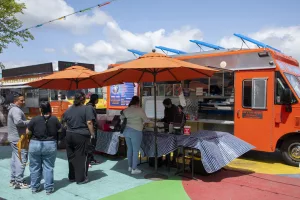
After only a year of operations, few businesses can boast of Mitote’s success. The food park offers a selection of Mexican cuisine not found other places. The popular venue has helped revitalize a community and is a gathering place for families and people of all ages. Visiting Mitote is like a culinary trip to Mexico without the airfare. There’s a saying in Mexico about making sure to get a daily dose of “Vitamina T”—by eating a taco, a torta, tamale or tyaluda. Seems Mitote is just the place for that. Buen provecho!




